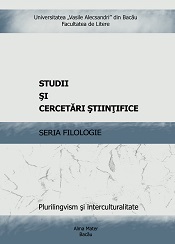La limite dans l’art performance au XXIe siècle: transgression et abandon à la transe
Boundaries in the art performance of the 21st century: transgression and the abandonment to trance
Author(s): Beatrice LăpădatSubject(s): Theatre, Dance, Performing Arts, Transformation Period (1990 - 2010), Present Times (2010 - today), Sociology of Art
Published by: Editura Alma Mater
Keywords: boundaries; performance art; contemporary dance; transgression; transcendence; trance;
Summary/Abstract: Our paper, titled Boundaries in the art performance of the 21st century : transgression and the abandonment to trance (« La limite dans l’art performance au XXIe siècle: transgression et abandon à la transe »), seeks to explore the meaning of boundary-pushing practices within the art performance of the 21st century centred around violence, in reference, on the one hand, to the concept of transgression and, on the other, to that of transcendence. If transgression “has become a cliché of modern culture”, as Anthony Julius (2008) puts it, how can we project a post-2000 boundarypushing performative and choreographic practice without witnessing an undesired dilution of the concept while also being respectful of the ethical values that a new wave of artists is advancing? Our analysis of several performances signed by Jan Fabre and Youness Aboulakoul, respectively – two performance artists marked by different generational and socio-cultural backgrounds – provides the framework to acknowledge the different ways in which contemporary artists may nourish the notion of boundary-pushing models. While Jan Fabre denounces what we might call “pseudo-transgression” in Orgy of tolerance (2009) as he employs himself a series of shock strategies and a radical display of physical violence, French-Moroccan choreographer Youness Aboulakoul directs the boundary-pushing performative process to his own body by the means of trance, without ever recurring to an actual corporeal brutality that might hurt or shock the audience. These different practices open what we hope to be a productive field of debate helping us to understand how choreographic and performative systems are changing in relation to the way in which concepts such as violence, transgression, and corporeal limits are being shaped and socially accepted and assimilated today.
Journal: Studii și cercetări științifice. Seria filologie
- Issue Year: 2021
- Issue No: 46
- Page Range: 41-53
- Page Count: 13
- Language: French

